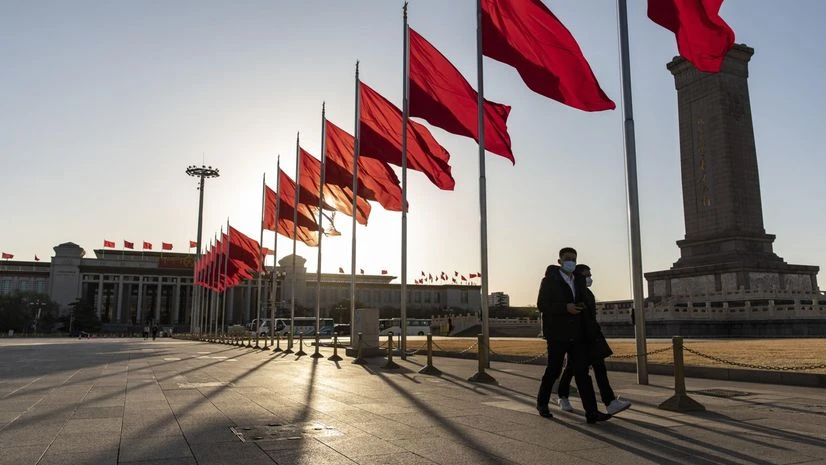By Daniel Moss
China’s short-term economic prospects no longer look quite so foreboding, but it would be unwise to proclaim that a bottom has arrived. The country is in a long-drawn slowdown that didn't begin yesterday and won't be over next week. Far from its shores, the challenges to a recovery have registered among policymaking elites: When it nudged interest rates higher, the European Central Bank simultaneously warned of a slowing regional and global economy. China was present in all but name.
First, the encouraging news. After months of downbeat reports, optimists finally have something to chew on. Industrial production picked up nicely in August, exceeding forecasts, while the consumer has yet to throw in the towel, with retail sales notching a healthy increase. Unemployment in urban areas retreated a touch. Just as importantly, consumer prices crept back into positive territory in August. The prior month's numbers showed prices declined, the trigger for revved-up anxiety about the faltering recovery and lectures about the perils of deflation. This is consistent with the fluctuating pattern of growth that the Communist Party's politburo flagged in July.
Also Read: 103 Chinese warplanes flew toward island in a new daily high, says Taiwan
Are we looking at a glass half-full or the opposite? A healthy Chinese economy is a prerequisite for a solid and durable world expansion. Better a month of reasonably good data than another installment of doom and gloom. But it's important not to get carried away. Pronounced slowdowns, and even recessions, can contain weeks or even months when things don't look so bad. That's important context for scrutinizing actions by the People's Bank of China. The central bank seems to be taking out some insurance against worse-case outcomes.
On Thursday, it unveiled a reduction in the amount of cash lenders must hold in reserve, the second such move this year and one aimed at helping banks support government spending. China’s nudges on the reserve rate typically roll out on a Friday evening at around 5 p.m. The shift in timing fueled speculation that sunrise would bring more action, that China was sending a signal.
Also Read
The PBOC opted to disappoint tea-leaf readers, in this instance. The authority kept the medium-term policy rate at 2.5% after a surprise trim of 15 basis points last month. A repeat was probably never really in the cards. Central bankers like to maintain an air of omnipotence and sometimes urge such rectitude on those they are trying to help. During the height of the global financial crisis, Tim Geithner, then president of the Federal Reserve Bank of New York, urged a top Wall Street executive not to speak publicly until he had lost the fear in his voice. A second consecutive surprise from the PBOC would have conveyed a sense that authorities believed something was deeply wrong. Such a jolt, if required, can wait.
Governor Pan Gongsheng did add more cash into money markets on Friday. The bank has spent months leaning against bets on a weaker currency. The yuan is down about 5% versus the dollar this year, one of the biggest declines among Asian currencies. Pan isn't looking like the hawk that some depicted him as when he came to the job a few months ago. That’s a good thing.
Less great is that China’s struggles featured, albeit indirectly, in the ECB’s quarter-point rate hike last week and the accompanying downgrade to the euro zone’s growth forecasts. The bank attributed the slowdown to the effects of rapid tightening and “the weakening international trade environment.” The latter is code for China, according to Krishna Guha, who tracks central banks at Evercore ISI.
If Beijing’s travails are noticed in Frankfurt, how long before the Federal Reserve starts to send out a flare?
China's economy still isn't where it needs to be. The growth target of about 5% this year, which looked like a low-ball estimate when it was announced in March, would be a good outcome — and one Beijing may strain to achieve.
Just remember to watch for the waves and what leaders called “bumps during progress.” The undertow can be awkward.
Disclaimer: This is a Bloomberg Opinion piece, and these are the personal opinions of the writer. They do not reflect the views of www.business-standard.com or the Business Standard newspaper

)
